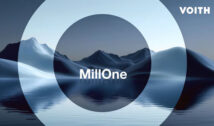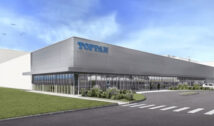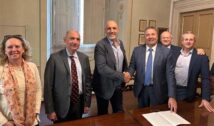
In January, as part of its 2019-2020 assessment campaign (wave A), the High Council for the Assessment of Research and Higher Education (Hcéres) audited the Laboratory of Pulp and Paper Science and Graphic Arts (UMR CNRS 5518).
Published at the end of April, its report offers a glowing assessment, stating that the laboratory “is committed to an integrated approach in the field of plant fibre valorization, which it implements in brilliant fashion. Despite its modest size and thanks to a global vision reinforced by various areas of excellence, notably in biorefinery, nanocrystalline cellulose and both 2D and 3D printing, LGP2 is a unique group at international level.“
Headed by Professor Didier Chaussy, LGP2 is an important European academic institution specialising in plant fibres, biorefinery, processes involving bio-based paper, cardboard and materials (composites, films and non-wovens), as well as printing processes and additive technologies. The unit conducts multidisciplinary research into the valorization of lignocellulosic materials. This includes the study of processes for disassembling and reconstructing lignocelluloses (pulping processes, paper processes and manufacturing processes), printing processes for the extraction of fibres, polymers, oligomers and molecules from native plant biomass, the development of bio-based paper and cardboard materials and products, flexible films, composites and nanocomposites, nanocelluloses and their chemical and physicochemical modification, as well as the functionalization of bio-based materials (2D and 3D) using impregnation, coating and contact/non-contact printing techniques.
The committee of experts highlighted the laboratory‘s productivity: “LGP2‘s output in terms of scientific publications is remarkable and its commitment to training through research is outstanding“. Similarly, in terms of contractual activities, “thanks to its strong synergies with the Pagora engineering school and its leading role in Grenoble‘s research ecosystem, LGP2 demonstrates a remarkable ability to secure various types of national funding (regional, National Research Agency, National Investment Program, private, etc.)“. The research centre also enjoys a very close relationship with industry: “The way this unit interacts with industry is remarkable and some teams display exceptional skill in doing so. This is clearly demonstrated by the number of patents filed and granted, but also by the laboratory‘s two startup projects“.
The Hcéres points out that “over the last period, LGP2‘s management further improved the unit‘s organizational structure. The major reorganization initiated during the previous mandate period – most notably by switching from five to three teams – has continued, making it possible to improve internal synergies and the cohesion of the unit as a whole“. In view of these numerous strengths, the High Council predicts that “during the next mandate period, [LGP2] should succeed in fulfilling its potential in terms of international attractiveness“.
The report is available at:
RELATED NEWS
New Strategic Partnership for GAW technologies in France
April 4, 2025
Andritz to acquire A.Celli
April 3, 2025
CEO of Metsä Board Corporation to change
April 2, 2025
Roquette Receives the Ecovadis Gold Medal
April 2, 2025
Italia Technology Alliance (A.Celli Group) acquires Sipack
March 31, 2025
Sonoco named one of America’s most trustworthy companies
March 28, 2025
Golbey to start containerboard production in April
March 27, 2025

































